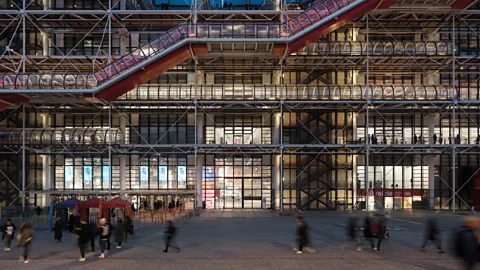The Daring Pompidou Centre
The Pompidou Centre was initially met with derision when its design was unveiled, yet it has had a lasting impact on the architecture of public buildings. As the building prepares for a major renovation, co-creator Renzo Piano reflects on the initial backlash and its enduring legacy.
This summer, the Centre Pompidou will close for five years to undergo renovations aimed at improving health, safety, and energy efficiency. The overhaul, led by Moreau Kusunoki Architects, Frida Escobedo Studio, and AIA Life Designers, will increase usable floor space, remove asbestos, enhance fire safety, and improve accessibility.

Piano emphasizes the importance of conserving the building’s original design, as it is closely tied to its creators. The duo, Piano and the late Richard Rogers, won a prestigious competition in 1971 with their revolutionary design, which aimed to make culture accessible to all. Their idea was to create a museum that inspired curiosity rather than intimidation.
The Pompidou Centre is celebrated for its "inside-out" design, where structural elements are exposed, allowing for expansive open-plan spaces. The building is adorned with a colorful exoskeleton of tubes and pipes, each serving a different purpose: blue for air conditioning, yellow for electricity, green for water, and red for pedestrian circulation. Escalators encased in transparent tubes provide stunning views, reinforcing the museum's connection to the city.
A Moment of Change
The cultural climate of France during the 1960s, influenced by the events of May 1968, created an environment ripe for such a disruptive structure. The Pompidou Centre's design was inspired by the experimental architecture of the London-based group Archigram.
Piano recalls the initial backlash at the press conference announcing their victory, where hecklers criticized the design as an eyesore. However, over time, the Pompidou has become one of Paris's most visited institutions, attracting millions and enhancing the cultural landscape of the city.

The Centre has inspired countless architects and continues to be a symbol of innovation. As Piano succinctly puts it, the Pompidou Centre proves that culture can be more public, serving as a gathering place for art, life, and community.

The Pompidou Centre has not only transformed the Parisian skyline but has also changed the way architects think about public buildings, emphasizing accessibility, openness, and community engagement.





Comments
Join Our Community
Sign up to share your thoughts, engage with others, and become part of our growing community.
No comments yet
Be the first to share your thoughts and start the conversation!